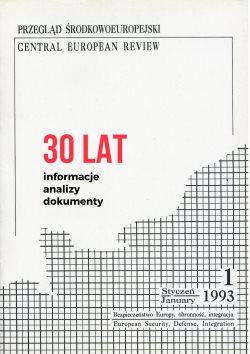Paweł Świeboda is president and Maria Sadowska is head of “Europe in the world” programme in demosEUROPA-Centre for European Strategy
Not many champagne bottles are being opened in Ukraine, Moldova or Georgia to celebrate progress of the EU in launching the Eastern Partnership, its new flagship project meant to improve ties with the six neighbouring countries of Eastern Europe. Premature toasts would be ill-advised but there is reason for cautio¬us optimism that the EU will now devote at least marginally more attention to its troubled vicinity. The Eastern neighbours should welcome the initiative, do their homework and ask for more. They should expect the EU to put its money and effort where its mouth is and continue on the path that, if successful, will bring them closer to the eventual membership in the European Union.
The Eastern Partnership is a mirror image of the French-inspired Union for the Mediterranean. If it was not for the Georgian war, it would have slowly matured in Polish, Swedish and Czech (next year’s EU presidency) oak bottles. Turmoil in the Caucasus heightened the pressure to make the offer for the Eastern neighbours both quicker and more tangible. It also coincided with the growing frustration with the European Neighbourhood Policy which was designed at a dif¬ferent historical moment. Carrying the traces of the big bang enlargement of 2004–2007 without the offer of membership, it was regarded with a high de¬gree of suspicion by the neighbours themselves. Following the Polish-Swedish initiative in the early summer, the Commission’s communication of 4 De¬cember spells out in detail what can be expected when it comes to the content of the Eastern Partnership. For some, it will be ENP dressed in new clothes, for ot¬hers—a new strategic programme of greater EU engagement in its immediate vicinity.
The new offer naturally shifts the debate to the wider international context of the policy towards the neighbourhood as well as to its potential implications for EU–Russia relations. The European concept of closer economic ties and enhanced political and social dialogue as a means of building an effective influence in its proximity meets with relative indifference in Moscow. Both the EU and Russia feel intuitively that their say over the disputed neighbourhood is gro¬wing but neither side is concerned over what the other one is up to. The EU is additionally constrained by its lack of tradition to act strategically in foreign policy.
What is more, the EU must not take for granted that its new offer will spark enthusiasm of the six partner countries and inspire enormous efforts to arduously im¬plement an ever greater number of EU laws and regulations. The success of the new proposal will be a function of the responsiveness of the countries concerned with respect to the fresh set of sticks and carrots on offer. It will be difficult to achieve it without a clear and attractive end-point result in sight.
Having said that, the Eastern Partnership is certainly not a dishonest attempt to brush up the EU’s unconvincing stance towards the neighbourhood. Poli¬tically, it is a symmetrical reflection of the latest steps taken by NATO towards Ukraine and Georgia. The decision not to grant these countries Membership Ac¬tion Plan (MAP) does not exclude their eventual membership in the Alliance. On the contrary, strengthening their institutions and building their capacities thro¬ugh NATO Commissions could eventually prove to be as effective and in the end lead to an admission to the Alliance when the time is ripe. The same logic ap¬plies to the Eastern Partnership, regardless of all the differences between the EU and NATO processes. It is tangible and flexible enough to be properly responsi¬ve to the neighbouring countries’ deficiencies and needs. The more strings attached, the stronger the leverage for further EU efforts in the area. As Rado¬sław Sikorski, Polish Foreign Minister stressed, the Eastern Partnership does not prejudge any shape of future relations between the EU and its partners. It does not provide them with a promise of EU membership but it puts them on track towards that goal.
